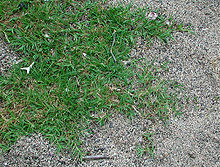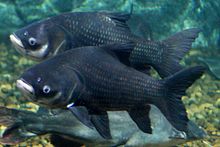Lake Débo
| Lake Débo | ||
|---|---|---|
Primary inflows Niger River | | |
| Primary outflows | Niger River | |
| Basin countries | Mali | |
| Surface area | 160 km2 (62 sq mi) | |
Lake Débo is a lake in the central part of Mali, formed by the seasonal flooding of the Niger River basin. It is in the Inner Niger Delta of the Niger River. During high water stages of the river, the delta formed by lakes, creeks, and backwaters form part of Lake Débo. The inner delta has many wide channels, which are shallow and flooded marshes; this delta extends over a length of 320 kilometres (200 miles) with a width of 80 km (50 mi). Lake Débo during high flow season, is at a distance of 80 km (50 mi) from Mopti on its upstream, on the southern end and 240 km (150 mi) from Timbuktu at its downstream, on the north-eastern end. It is the largest of many such seasonal wetlands and lakes which form the Inner Niger Delta, and the largest lake within Mali. Its size is largely reduced during the dry season of September to March. The existence of this lake called the "Great Lake" in the inner delta of Niger River between Jenne and Timbuktu in Mali has been established after extensive study of maps of the region extending over a period from 1000 to 1900 AD; 400 maps were studied for the period.
History

This lake, called the "Great Lake" in the inner delta of Niger River between Jenne and Timbuktu in Mali, was known to Europeans from very early times. The earliest known report of it was in the first millennium BC. Ptolemy described it as having the shape of a barbell. Study of more than 400 maps of the region created over a period from 1000 to 1900 AD found that the lake appeared on 95 percent; the only feature depicted on more maps was the Nile.[1][2][3] The lake has been known variously as Nigrite Palus, Lake Sigisma, Lake Guber, Lake Guarda, Bog/Morais of Guarda, Lake Maberia, Bahar Seafeena, Lake Dibbie, but it is now known as Lake Débo.[1][2] The Niger River is assessed as a young river of 2000 years age and is yet to stabilize. However, the natural channels have undergone many meandering changes.[4]
Geography

The lake is formed upstream of the confluence of Niger and
Geological formations recorded at the bed of the lake are "from dense
Below Lake Debo, the Niger valley is marked by a large number of lakes, which are lower than the river level.
During the high flood stage, flood waters arriving at the lake are reported as 12,400 km3/s (178,000 cu mi/min). This was absorbed in the vast lake, as storage, and the out flow from the lake is thus moderated to only 2,400 km3/s (35,000 cu mi/min) when it reaches Niamey, the capital city of Niger. Since 1962, even a 1,000 km3/s (14,000 cu mi/min) extra flow from the lake could now cause increase of water level in the Niamey area by 2 m (6 ft 7 in), rising to the level 181.51 metres (595 ft 6 in).[13]
Climate
The lake in the Sahel, just south of the Sahara desert, has climatic conditions which are reported to be a transitional zone of humid Guinean climate in the south to a dry climate at border with the Sahara. The rainy season in the south lasts from July to October, with an average annual rainfall of 750 mm (30 in). However, the rainy season in the north lasts from July to September, with an average annual precipitation recorded at 250 mm (9.8 in). Temperatures vary with strong seasonal emphasis. The average maximum temperature recorded in May at Tombouctou is 43 °C (109 °F) and at Mopti is 40 °C (104 °F). The cooler climatic season is from December to January with temperatures dropping to a mean minimum of 3 °C (37 °F) to 6 °C (43 °F) in the northern part of the delta.[14]
Lake Débo during high flow season when it has the maximum dimensions of water spread, is 80 km (50 mi) from Mopti on its upstream, on the southern end, and 240 km (150 mi) from Timbuktu at its downstream, on the north-eastern end. It is the largest of many such seasonal wetlands and lakes which form the Inner Niger Delta, and the largest lake within Mali. Its size is largely reduced during the dry season of September to March.[15][16]
Vegetation

The inundated Lake Débo and Walado Débo (Inner Niger Delta in Mali) form the pasture lands which are collectively known as the flooded forest savannah with aquatic herbaceous and two dominant species of acacia. These pastures are known locally as bourgou grass.[17] Palms like Hyphaene thebaica, and Borassus aethiopum are also reported on the fringes of the lake.
There are three types of pasture lands, defined on the basis of its management. These are: Resident Fulani's pastures which are controlled by the
The sloping banks of the lake have shrubs interspersed with grasses and vacant patches, and woody species, generally of acacia species.[17] Akkagoun and Dentaka are the forested areas surrounding the lake and the delta, which are home for many water birds. Algal blooms are also reported from the lake which could result in reduction of the water transparency.[14]
Fauna

The
The
As the lake is an important stopping place for

The Synodontis gobroni and the Gobiocichla wonderi are two endemic species of fishes in the lake which is part of the inland delta.[18]
The aquatic fauna in the delta as a whole, which is reflective of the lake also, consists of 130 species mostly of the species in the families of
Culture
When the Niger and Bani Rivers are in spate, fishing operations are carried out in the lake using trawlers. The ethnic Bozo fisherman, resident on the shores of the lake are involved in these operations. During the dry season, the many ethnic Fula nomads come to this lake area as their terminus destination during the seasonal transhumance migration along with their herds from the north.[16]
References
- ^ a b c d "The Inland Niger Delta: A Cartographic Connection". Afriterra.org. Archived from the original on 9 June 2013. Retrieved 18 March 2013.
- ^ a b Gerald J. Rizzo. "The Inland Niger Delta: A Cartographic Beacon". Afriterra Foundation. Archived from the original on 2016-03-03. Retrieved 2013-04-23.
- .
- ^ a b "Support Project for Wetland Management In the Inner Niger Delta" (PDF). Cmsdata.iucn.org. Archived from the original (PDF) on 24 October 2012. Retrieved 22 March 2012.
- ISBN 978-1-84162-077-0. Retrieved 20 March 2013.
- ISBN 978-0-415-42792-0. Retrieved 20 March 2013.
- ISBN 978-1-4020-0866-5. Retrieved 20 March 2013.
- ^ ISBN 978-2-88032-949-5. Retrieved 20 March 2013.
- ISBN 978-0-521-81300-6. Retrieved 20 March 2013.
- ^ ISBN 978-1-59726-791-5. Retrieved 20 March 2013.
- ^ West Africa. Taylor & Francis. 1957. pp. 253–. GGKEY:XNB450PQT77. Retrieved 20 March 2013.
- ^ Samuel Greatheed; Daniel Parken; Theophilus Williams; Thomas Price; Josiah Conder; William Hendry Stowell; Jonathan Edwards Ryland; Edwin Paxton Hood (1830). The Eclectic Review. pp. 307–. Retrieved 20 March 2013.
- ISBN 978-1-4697-7432-9. Retrieved 10 March 2013.
- ^ a b "Case of Flooded Pasture in Lake Débo and Walado Débo, Journal Computer and Information Science, Vol. 4, No. 3". Science Journal. May 2011. Retrieved 21 March 2013.[permanent dead link]
- ^ "Lac Débo". Encyclopædia Britannica. Retrieved 21 March 2013.
- ^ a b "Africa adventure 4". Update 019 April 24th, Debo Lake --Sunny Water World. Jinfeibao8844.com. Archived from the original on 24 June 2012. Retrieved 22 March 2013.
- ^ a b c "Applied GIS for Managing Flooded Pastures of Lake Debo and Walado Debo/Mali". Journal of GIS Trends. Archived from the original on 16 October 2011. Retrieved 21 March 2013.
- ^ a b c d e "Ecoregion Description:Inner Niger Delta". Fresh Water Ecoregions of the World, FWEO Organization. Archived from the original on 29 October 2013. Retrieved 22 March 2013.
- ^ ISBN 978-0-226-56792-1. Retrieved 10 March 2013.

